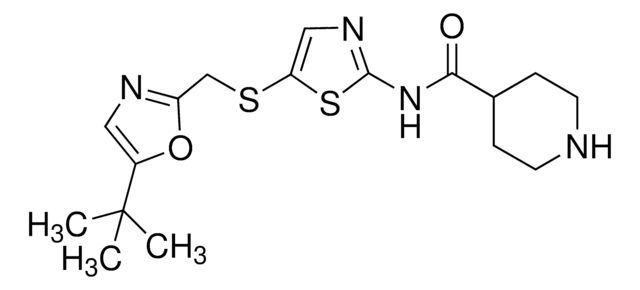850404P
Avanti
4ME 16:0 PG
1,2-diphytanoyl-sn-glycero-3-phospho-(1′-rac-glycerol) (sodium salt), powder
Synonym(s):
1,2-di-(3,7,11,15-tetramethylhexadecanoyl)-sn-glycero-3-phospho-(1′racglycerol) (sodium salt); PG(16:0(3me,7me,11me,15me)/16:0(3me,7me,11me,15me))
About This Item
Recommended Products
Assay
>99% (TLC)
form
powder
packaging
pkg of 1 × 25 mg (850404P-25mg)
manufacturer/tradename
Avanti Research™ - A Croda Brand 850404P
shipped in
dry ice
storage temp.
−20°C
SMILES string
[H][C@@](COP([O-])(OCC(O)CO)=O)(OC(CC(C)CCCC(C)CCCC(C)CCCC(C)C)=O)COC(CC(C)CCCC(C)CCCC(C)CCCC(C)C)=O.[Na+]
General description
Application
- as a phospholipid standard to quantify phosphatidylglycerol in plants using mass spectrometry analysis
- as a component in giant unilamellar vesicles (GUVs) for electrophysiology studies
- in the preparation of DPhPC (1,2-diphytanoyl-sn-glycero-3-phosphocholine/DPhPG vesicle vesicles
Biochem/physiol Actions
Packaging
Legal Information
Storage Class Code
11 - Combustible Solids
Certificates of Analysis (COA)
Search for Certificates of Analysis (COA) by entering the products Lot/Batch Number. Lot and Batch Numbers can be found on a product’s label following the words ‘Lot’ or ‘Batch’.
Already Own This Product?
Find documentation for the products that you have recently purchased in the Document Library.
Our team of scientists has experience in all areas of research including Life Science, Material Science, Chemical Synthesis, Chromatography, Analytical and many others.
Contact Technical Service








